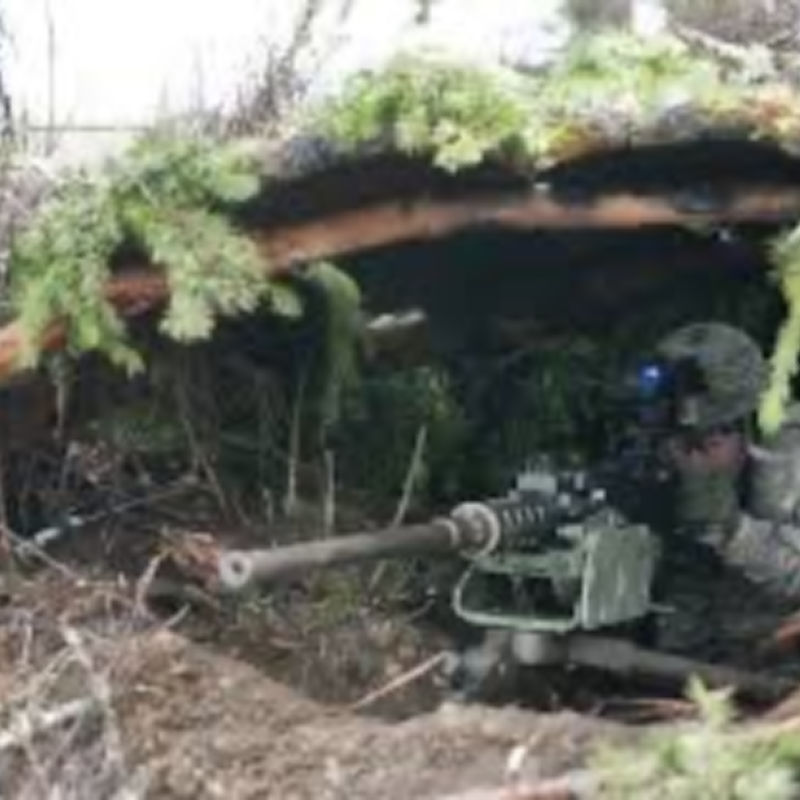
How to Create Camouflaged Defensive Fighting Positions in a Survival Situation
In a survival situation, whether you’re defending your homestead, campsite, or an emergency fallback position, a well-constructed and camouflaged defensive fighting position (DFP) can provide protection, concealment, and an advantage over potential threats.
Whether you're dealing with wild animals, hostile groups, or even just trying to stay hidden from prying eyes, understanding how to build an effective and covert DFP is a crucial skill.
In this guide, we'll explore the principles of site selection, construction techniques, camouflage methods, and practical considerations for maintaining an effective defensive position in a survival scenario.
Understanding Defensive Fighting Positions (DFPs)
 A Defensive Fighting Position (DFP) is a fortified location designed to provide protection and a tactical advantage to a defender. It can be a simple foxhole, an elaborate bunker, or a natural terrain feature adapted for defensive use. When thinking DFP it is important to remember such key features as...
A Defensive Fighting Position (DFP) is a fortified location designed to provide protection and a tactical advantage to a defender. It can be a simple foxhole, an elaborate bunker, or a natural terrain feature adapted for defensive use. When thinking DFP it is important to remember such key features as...
-
Cover: Protection from enemy fire, the elements, and visibility.
-
Concealment: Blending in with the surroundings to avoid detection.
-
Field of Fire: A clear line of sight to engage threats while remaining protected.
-
Accessibility: Easy to enter and exit for repositioning and retreat if necessary.
-
Defensibility: Positioned to make enemy approach difficult and dangerous.
Selecting the Best Location for Your DFP

The success of your defensive position begins with choosing the right location. Here are some key factors to consider:
a. Natural Terrain Features
Use natural terrain features to your advantage:
-
High Ground: Offers superior visibility and a defensive advantage.
-
Thick Vegetation: Provides natural concealment but should not obstruct your field of fire.
-
Rock Formations and Hills: Serve as natural barriers and provide cover.
-
Water Sources: While important for survival, being too close to water can expose you to threats looking for the same resource.
b. Avoiding Exposure
-
Stay off ridgelines where silhouettes can be easily spotted.
-
Avoid open fields unless cover and concealment are available.
-
Minimize disturbance to the area to prevent leaving signs of activity.
Constructing Your Defensive Fighting Position

a. Basic Foxhole
The simplest form of a DFP is the foxhole, which provides cover from small arms fire and can be improved over time.
Steps to Digging a Foxhole:
-
Dig a Hole: Roughly 3 feet deep, wide enough to accommodate a person lying prone or kneeling.
-
Build a Parapet: Pile the excavated soil around the hole to create a low wall.
-
Reinforce with Logs or Rocks: Add stability and additional protection.
-
Drainage Considerations: Slope the bottom slightly to prevent water buildup.
b. Enhanced Fighting Position
For longer-term defense, reinforce your foxhole with additional materials:
-
Overhead Cover: Logs and dirt layers protect against aerial threats.
-
Camouflage Netting: Helps blend the position with the environment.
-
Multiple Exit Points: Allows for quick escape if necessary.
-
Trenches and Secondary Positions: Provide maneuverability and alternate fields of fire.
c. Sniper or Observer Hide
For recon or stealth-based defense:
-
Use a depression, cave, or fallen tree as a natural hide.
-
Cover the top with natural debris to reduce visibility.
-
Ensure multiple exit routes in case of compromise.
Camouflaging Your Defensive Fighting Position

Even the best-placed and constructed position is useless if it’s easily spotted. Proper camouflage is critical.
a. Blending with the Environment
-
Use Local Materials: Match the colors and textures of the surrounding area.
-
Break Up the Outline: Avoid straight lines, unnatural shapes, and anything that stands out.
-
Add Vegetation: Attach branches, grass, and leaves to your position, but avoid freshly cut plants that will dry and change color.
b. Light, Sound, and Scent Discipline
-
Avoid Reflective Surfaces: Anything shiny or metallic can give away your position.
-
Keep Noise to a Minimum: Even a slight sound can travel far in quiet environments.
-
Manage Your Scent: Cooking smells and strong odors can alert others to your location.
c. Use Natural Shadows and Terrain
Position yourself in naturally shaded areas and avoid skylining against brighter backgrounds. Shadows help mask movement and reduce visibility.
Tactical Considerations for Defensive Positions

a. Overlapping Fields of Fire
If operating in a group, set up multiple DFPs with overlapping fields of fire to maximize coverage and minimize blind spots.
b. Traps and Early Warning Systems
-
Noise Traps: Simple tripwires with cans, rocks, or sticks can alert you to intruders.
-
Spiked Traps: Dug-out pits with sharpened sticks can deter or injure threats.
-
Booby Traps: Use natural hazards like falling branches to your advantage.
c. Supply and Ammunition Caches
-
Store backup weapons, food, and medical supplies nearby but hidden.
-
Ensure easy access in case of a prolonged defense scenario.
Maintaining Your Position and Avoiding Detection

a. Rotating Positions
-
Change locations periodically to prevent detection by observant threats.
-
Leave decoys or false positions to mislead enemies.
b. Managing Waste and Food Remnants
-
Bury or burn waste to prevent detection by smell or sight.
-
Keep food storage secure from animals and scavengers.
c. Staying Mentally and Physically Prepared
-
Keep hydrated and rested to maintain peak performance.
-
Train and drill regularly to ensure efficiency under pressure.
In Closing...

Building a camouflaged defensive fighting position in a survival situation requires planning, knowledge of terrain, and strategic execution.
By selecting a suitable location, properly constructing your position, utilizing effective camouflage techniques, and maintaining operational discipline, you can significantly increase your chances of staying hidden and protected.
Whether you're defending against human threats, wild predators, or simply securing your perimeter in a long-term survival scenario, mastering the art of camouflaged defensive positions is a crucial skill.
Stay alert, adapt to your environment, and always be prepared for the unexpected!

